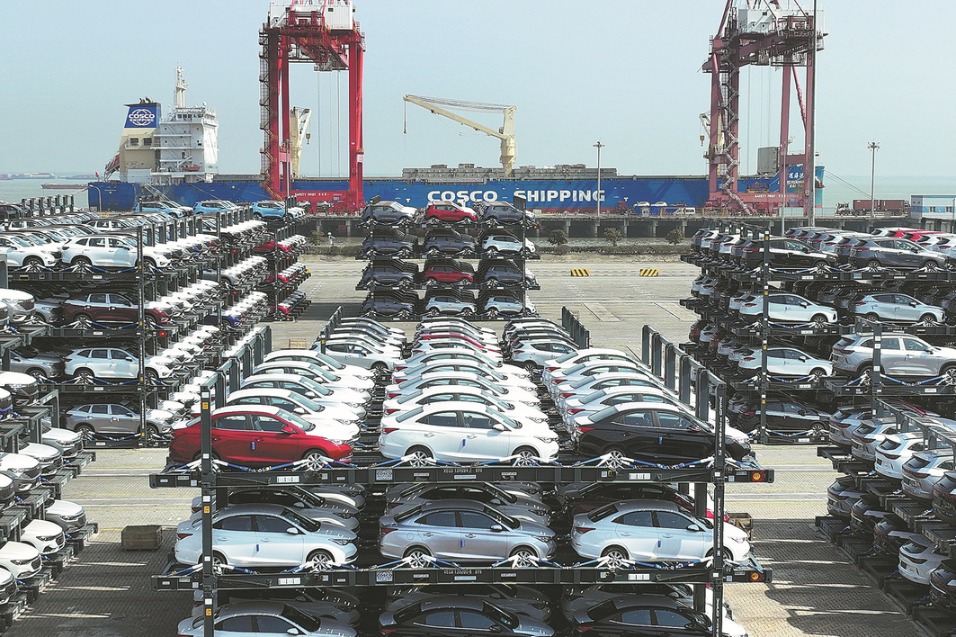Pig farm begs question: How high the sty? Call the elevator, please

Up a narrow road on Yaji Mountain in southern China, away from any villages, sows are being checked into high-rise "hog hotels" 1,000 head per floor.
Reuters reports that privately owned agricultural company Guangxi Yangxiang has got two seven-story sow-breeding operations underway and is putting up four more, including one with as many as 13 floors.
Two- or three-story vertical hog farms have been tried in Europe, and while some are still operating, others have been abandoned because of operations difficulties and public aversion to large-scale animal farms.
"There are big advantages to a high-rise building," Xu Jiajing, manager of Yangxiang's mountain-top farm, told Reuters.
"It saves energy and resources. The land area is not that much but you can raise a lot of pigs."
Yangxiang will be housing 30,000 sows on its 11-hectare site by year's end, producing as many as 840,000 piglets annually. That will likely make it the biggest, most intensive breeding farm in the world.
A more typical large breeding farm in northern China would have about 8,000 sows on around 32 acres.
Yangxiang is spending $2,560 per sow getting its new farm ready, about $80 million total, and that doesn't include the cost of the pigs themselves.
Building upwards also means higher operational costs and more moving parts, such as piping feed into buildings, ventilation and cleanup.
Minimizing health risks also raises costs. Chances of a rampant disease outbreak - an ever-present problem among China's livestock - are higher with more animals under one roof. The result could be extensive culling.
The Yangxiang hog hotel reduces the risk of disease by managing each floor separately, with staff working on the same floor every day. New sows are introduced to a building on the top floor and are then moved by elevator to an assigned level, where they stay.
The ventilation system prevents air from circulating between floors. Fresh air enters through ground channels and ventilation ducts on each level. A central rooftop exhaust with powerful fans pulls the air through filters and pushes it out of 50-foot-high chimneys.
A waste treatment plant, still under construction, will handle the site's manure, which, after being treated, will be sprayed on the surrounding forest and sold to local farms as organic fertilizer.
The success of high-rise pig farms in China could have implications across densely populated, land-scarce Asia, according to Reuters.
In Fujian province, Shenzhen Jinxinnong Technology plans to invest $24 million in two five-story sow farms in Nanping. Two other companies are building high-rise hog farms in Fujian as well, according to an equipment firm involved in the projects.
Thai livestock-to-retail conglomerate CP Foods is also building four six-story pig units with local firm Zhejiang Huatong Meat Products Co in Yiwu, a Chinese city near Shanghai.
While Beijing is encouraging more livestock production in China's grain basket in the northeast, there's some worry that farms there will struggle to get fresh pork safely to big cities thousands of miles away.
That has helped push some farm investments to southern provinces like Guangxi and Fujian, where land is hilly but much closer to many of China's biggest cities.
But after testing other models, Yangxiang concluded the multistory building was best. Others are less convinced.
"We need time to see if this model is doable," said Xue Shiwei, vice-chief operations officer at Pipestone Livestock Technology Consultancy, a Chinese unit of a US farm management company, adding that he would not encourage clients to opt for "hog hotels".
"There will be many new, competing ideas (about how to raise pigs in China)," Xue said, including high-rise farms.
Eventually, "a suitable model will emerge".



































